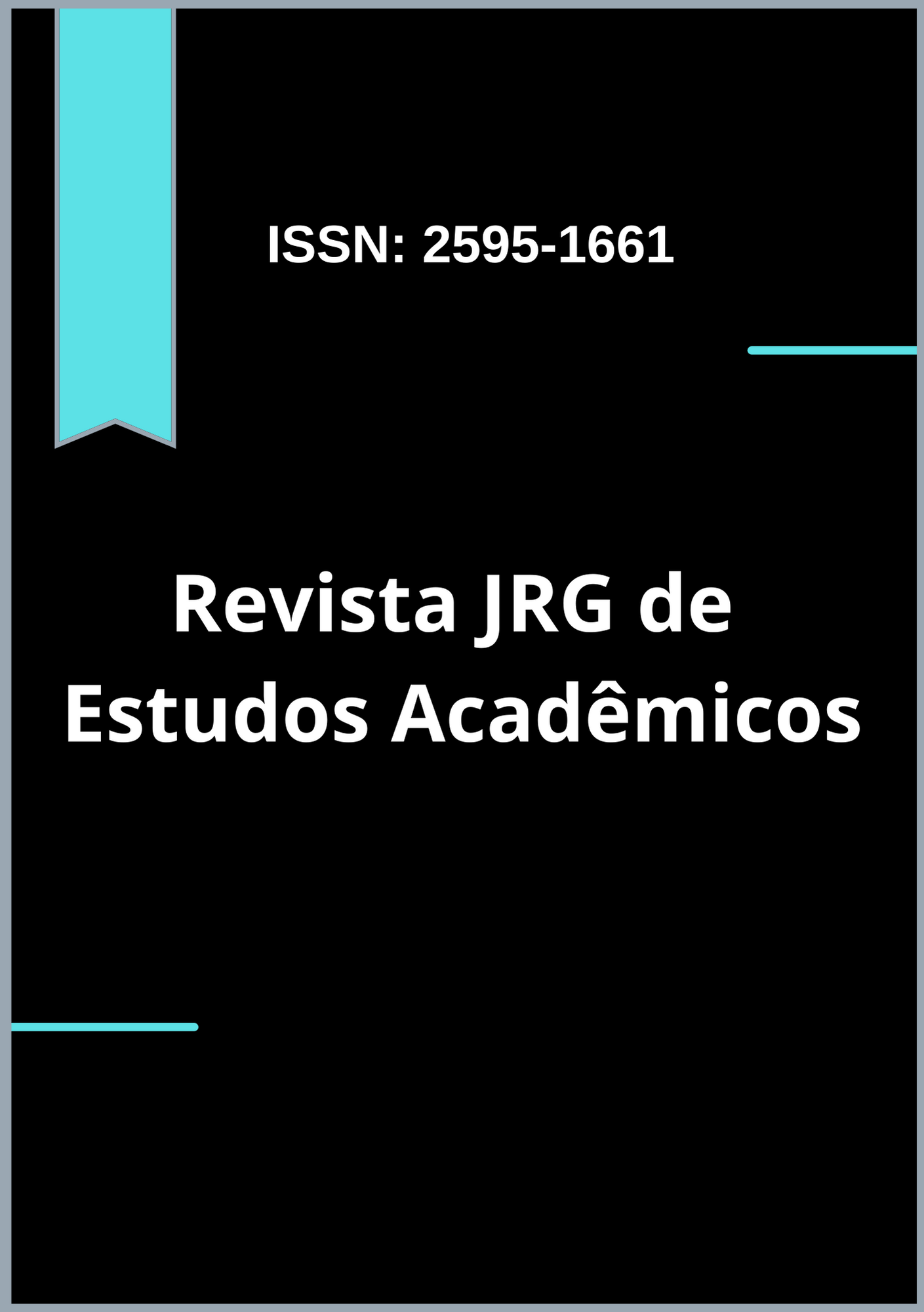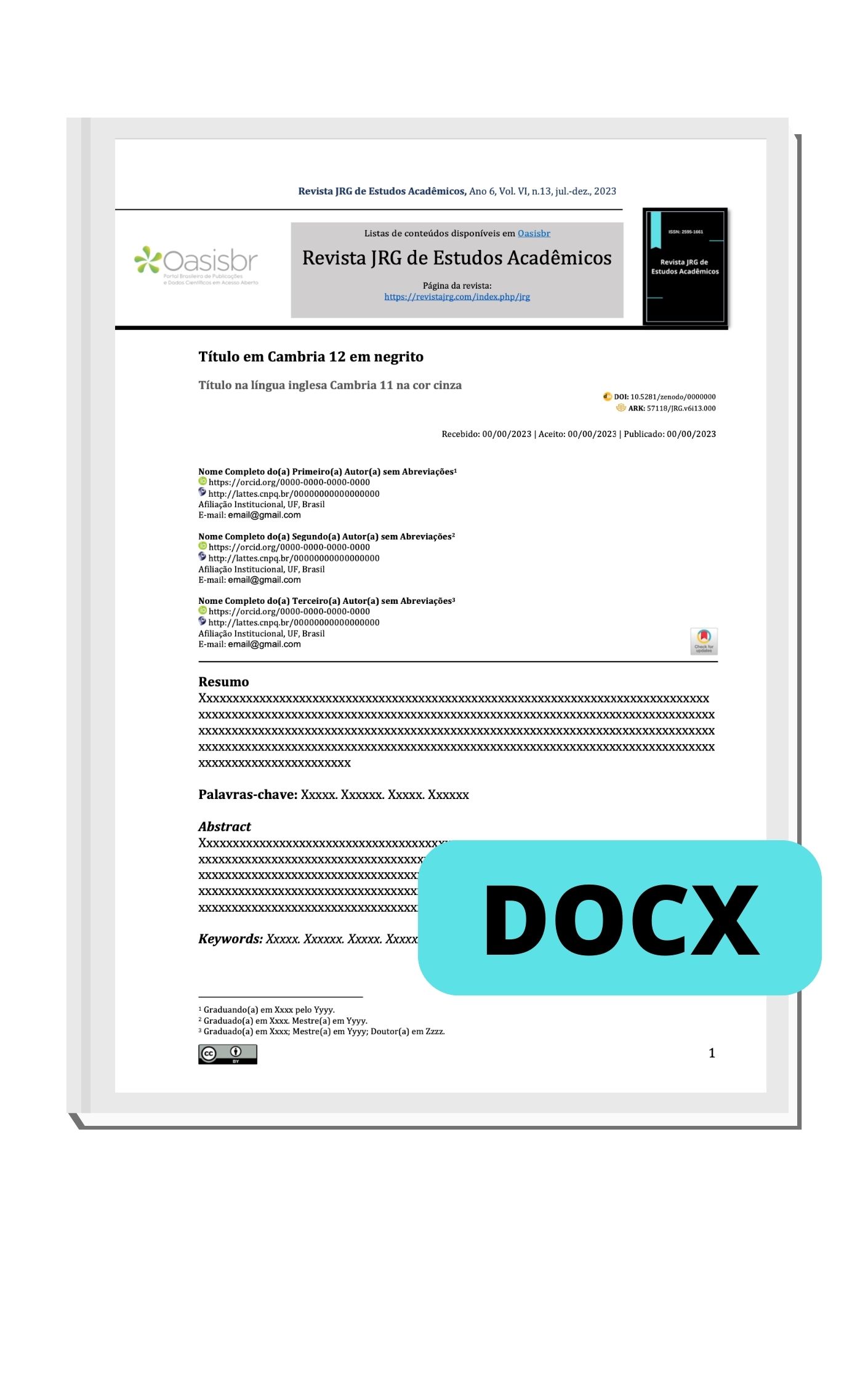Incidence of withdrawal syndrome in critically ill children undergoing a protocol for discontinuation of analgesia and sedation in a pediatric intensive care unit in Brasília, DF
DOI:
https://doi.org/10.55892/jrg.v8i18.1900Keywords:
opioids; benzodiazepines; discontinuation; analgesia; sedationAbstract
Background: Analgesia and sedation administered to critically ill pediatric patients in a Pediatric Intensive Care Unit (PICU) can increase the length of stay, tolerance, and the incidence of withdrawal syndrome (WS). This study aimed to assess the incidence of withdrawal signs in critically ill children undergoing an analgesia and sedation discontinuation protocol (ASDP) in a PICU at a hospital in Brasília, DF. Methods: This was a prospective cohort study of children admitted to a PICU who underwent the ASDP. Patients aged between 1 month and 14 years, who were on mechanical ventilation and hospitalized for over 72 hours, and using opioids and benzodiazepines, were included. Patients were categorized according to the ASDP into low, moderate, high, and very high-risk groups. Data were collected through interviews with the responsible person at the patient's bedside, the application of the WAT-1 tool, and the review of the patient's electronic medical record. The study was approved by the Research Ethics Committee (CAEE 78210624.7.0000.5553). Results: A total of 28 patients with respiratory diagnoses as the main cause were studied. The patients were classified as low (n = 15, 53.6%), moderate (n = 9, 32.1%), and high (n = 4, 14.3%) risk. The incidence of WS was 35.7% (n = 10), and 4 patients required rescue doses of morphine for symptom relief. Conclusion: The incidence of WS was lower than that reported in the literature, although no statistical difference was found between the groups stratified by risk.
Downloads
References
AMIGONI, A. et al. High doses of benzodiazepine predict analgesic and sedative drug withdrawal syndrome in paediatric intensive care patients. Acta Paediatrica (Oslo, Norway: 1992), v. 103, n. 12, p. e538-543, dez. 2014.
AMIGONI, A. et al. Withdrawal Assessment Tool-1 Monitoring in PICU: A Multicenter Study on Iatrogenic Withdrawal Syndrome. Pediatric Critical Care Medicine: A Journal of the Society of Critical Care Medicine and the World Federation of Pediatric Intensive and Critical Care Societies, v. 18, n. 2, p. e86–e91, fev. 2017.
ANAND, K. J. S. et al. Tolerance and Withdrawal From Prolonged Opioid Use in Critically Ill Children. Pediatrics, v. 125, n. 5, p. e1208–e1225, 1 maio 2010.
ARAÚJO, M. et al. Perfil do uso de sedoanalgesia em crianças sob ventilação mecânica em unidade de terapia intensiva. Residência Pediátrica, v. 9, n. 3, p. 246–251, 2019.
ÁVILA-ALZATE, J. A. et al. Assessment and treatment of the withdrawal syndrome in paediatric intensive care units: Systematic review. Medicine, v. 99, n. 5, p. e18502, jan. 2020.
BARBOSA, M. DOS S. R. et al. Tradução e adaptação transcultural da escala Cornell Assessment of Pediatric Delirium para língua portuguesa. Revista Brasileira de Terapia Intensiva, v. 30, p. 195–200, 2018.
BELTRAMINI, A.; MILOJEVIC, K.; PATERON, D. Pain Assessment in Newborns, Infants, and Children. Pediatric Annals, v. 46, n. 10, p. e387–e395, 1 out. 2017.
BROWN, K. W. et al. Children And The Opioid Epidemic: Age-Stratified Exposures And Harms. Health Affairs (Project Hope), v. 39, n. 10, p. 1737–1742, out. 2020.
CALDWELL, D.; WONG, J.; DUFFETT, M. Sedative Medications for Critically Ill Children during and after Mechanical Ventilation: A Retrospective Observational Study. The Canadian Journal of Hospital Pharmacy, v. 73, n. 2, p. 125–132, 2020.
CONRAD, P. et al. Iatrogenic withdrawal syndrome in specialty pediatric critical care. Applied nursing research: ANR, v. 55, p. 151284, out. 2020.
FRANCK, L. S. et al. The Withdrawal Assessment Tool-1 (WAT-1): an assessment instrument for monitoring opioid and benzodiazepine withdrawal symptoms in pediatric patients. Pediatric Critical Care Medicine: A Journal of the Society of Critical Care Medicine and the World Federation of Pediatric Intensive and Critical Care Societies, v. 9, n. 6, p. 573–580, nov. 2008.
FRANCK, L. S. et al. Validity and generalizability of the Withdrawal Assessment Tool-1 (WAT-1) for monitoring iatrogenic withdrawal syndrome in pediatric patients. Pain, v. 153, n. 1, p. 142–148, jan. 2012.
GUPTA, K. et al. Randomized controlled trial of interrupted versus continuous sedative infusions in ventilated children. Pediatric Critical Care Medicine: A Journal of the Society of Critical Care Medicine and the World Federation of Pediatric Intensive and Critical Care Societies, v. 13, n. 2, p. 131–135, mar. 2012.
HOSPITAL MATERNO INFANTIL DE BRASÍLIA. Protocolo de Descontinuação de BENZODIAZEPÍNICOS na UTI Pediátrica. Brasília: [s.n.], 2021.
HOSPITAL MATERNO INFANTIL DE BRASÍLIA. Protocolo de Descontinuação de OPIOIDES na UTI Pediátrica. Brasília: [s.n.], 2021.
JOHNSON, P. N.; MILLER, J. L.; HAGEMANN, T. M. Sedation and analgesia in critically ill children. AACN advanced critical care, v. 23, n. 4, p. 415–434; quiz 435–436, 2012.
KLEIN, K. et al. Strategies for the management and prevention of withdrawal syndrome in critically ill pediatric patients: a systematic review. Revista Brasileira De Terapia Intensiva, v. 34, n. 4, p. 507–518, 2022.
LIVISKIE, C.; MCPHERSON, C.; LUECKE, C. Assessment and Management of Delirium in the Pediatric Intensive Care Unit: A Review. Journal of Pediatric Intensive Care, v. 12, n. 2, p. 94–105, jun. 2023.
MACDONALD, I. et al. Effectiveness, quality and implementation of pain, sedation, delirium, and iatrogenic withdrawal syndrome algorithms in pediatric intensive care: a systematic review and meta-analysis. Frontiers in Pediatrics, v. 11, p. 1204622, 2023.
ROBIN, N.; RIAUD, C.; ORLIAGUET, G. Incidence of iatrogenic withdrawal syndrome and associated factors in surgical pediatric intensive care. Arch Pediatr., 2023 Jan; 30 (1): 14-19.
SANCHEZ-PINTO, L. N. et al. Implementation of a risk-stratified opioid weaning protocol in a pediatric intensive care unit. Journal of Critical Care, v. 43, p. 214–219, fev. 2018.
SANAVIA, E. et al. Sedative and Analgesic Drug Rotation Protocol in Critically Ill Children With Prolonged Sedation: Evaluation of Implementation and Efficacy to Reduce Withdrawal Syndrome. Pediatric Critical Care Medicine: A Journal of the Society of Critical Care Medicine and the World Federation of Pediatric Intensive and Critical Care Societies, v. 20, n. 12, p. 1111–1117, dez. 2019.
SIEGEL, E. J.; TRAUBE, C. Pediatric delirium: epidemiology and outcomes. Current Opinion in Pediatrics, v. 32, n. 6, p. 743–749, dez. 2020.
SNEYERS, B. et al. Strategies for the Prevention and Treatment of Iatrogenic Withdrawal from Opioids and Benzodiazepines in Critically Ill Neonates, Children and Adults: A Systematic Review of Clinical Studies. Drugs, v. 80, n. 12, p. 1211–1233, ago. 2020.
SRIVASTAVA, A. B.; MARIANI, J. J.; LEVIN, F. R. New directions in the treatment of opioid withdrawal. Lancet (London, England), v. 395, n. 10241, p. 1938–1948, 20 jun. 2020.
THIGPEN, J. C.; ODLE, B. L.; HARIRFOROOSH, S. Opioids: A Review of Pharmacokinetics and Pharmacodynamics in Neonates, Infants, and Children. European Journal of Drug Metabolism and Pharmacokinetics, v. 44, n. 5, p. 591–609, out. 2019.
TRAUBE, C. et al. Delirium and Mortality in Critically Ill Children: Epidemiology and Outcomes of Pediatric Delirium. Critical Care Medicine, v. 45, n. 5, p. 891–898, maio 2017.
VET, N. J. et al. A randomized controlled trial of daily sedation interruption in critically ill children. Intensive Care Medicine, v. 42, n. 2, p. 233–244, fev. 2016.
VINCENT, J.-L. et al. Comfort and patient-centred care without excessive sedation: the eCASH concept. Intensive Care Medicine, v. 42, n. 6, p. 962–971, jun. 2016.
WILLIAMS, D. C.; CHEIFETZ, I. M. Emerging approaches in pediatric mechanical ventilation. Expert Review of Respiratory Medicine, v. 13, n. 4, p. 327–336, abr. 2019.











































